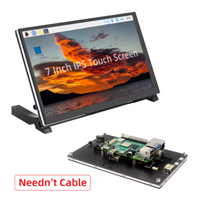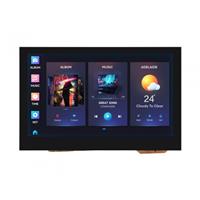|
|
ESP-WROOM-32 |
x 1 |

|
DiptraceDiptrace
|
SMART PLUG
We all enjoy utilising a single device, or main controller, to operate all of our devices in a home automation system. One such gadget that makes it very simple for us to do that is the WiFi Smart Plug. It gives you access to practically every wired gadget, including a table fan, lighting, air conditioning, etc. In my situation, I had long wished to create a WiFi Smart Plug that could turn on and off my air conditioning. A WiFi Smart Plug functions similarly to a power strip. It fits between the appliance you want to plug in and the power outlet. Most smart plugs connect to a central control hub through any Wi-Fi network. The hub then transmits data to a smartphone app using your Wi-Fi. The idea behind this WiFi Smart Plug is to enable you to switch gadgets on and off using your smartphone or any remote control. Simply plug it into a socket and turn on the power—it couldn't be easier. Now connect any lamps or other devices to the WiFi socket. I'm done now. The WiFi Smart Plug is now powered by AC power from the main outlet. It switches the following devices on and off at the user's request through the Android app.
#include <ESP8266WiFi.h> #include "./DNSServer.h" #include <ESP8266WebServer.h> const byte DNS_PORT = 53; // 53 is set as DNS port IPAddress apIP(10, 10, 10, 1); // Network Server DNSServer dnsServer; // DNS server object ESP8266WebServer webServer(80); // Webserver objectString Home_Screen = "" //Page 1 - Home Screen HTML code "<!DOCTYPE html><html>" "<head><meta name=\"viewport\" content=\"width=device-width, initial-scale=1\">" + style_detials + "<div id=\"buttons\">" "<a style=\"text-decoration:none;\" href=\"relay_ON\"> <button id=\"switchLight1\" class=\"controllButtons\">Turn ON</button> </a>" "<a style=\"text-decoration:none;\" href=\"relay_OFF\"><button id=\"switchLight2\" class=\"controllButtons\">Turn OFF</button> </a>" "</div>" "<body><h1>Welcome - CircuitDigest</h1>" "</body></html>"; String ON_Screen = "" //Page 2 - If device is turned ON "<!DOCTYPE html><html>" "<head><meta name=\"viewport\" content=\"width=device-width, initial-scale=1\">" + style_detials + "<div id=\"buttons\">" "<a style=\"text-decoration:none;\" href=\"relay_ON\"> <button id=\"switchLight1\" class=\"controllButtons\">Turn ON</button> </a>" "<a style=\"text-decoration:none;\" href=\"relay_OFF\"><button id=\"switchLight2\" class=\"controllButtons\">Turn OFF</button> </a>" "</div>" "<body><h1>Smart Plug - Turned ON</h1>" "</body></html>"; String OFF_Screen = "" //Page 3 - If device is turned OFF "<!DOCTYPE html><html>" "<head><meta name=\"viewport\" content=\"width=device-width, initial-scale=1\">" + style_detials + "<div id=\"buttons\">" "<a style=\"text-decoration:none;\" href=\"relay_ON\"> <button id=\"switchLight1\" class=\"controllButtons\">Turn ON</button> </a>" "<a style=\"text-decoration:none;\" href=\"relay_OFF\"><button id=\"switchLight2\" class=\"controllButtons\">Turn OFF</button> </a>" "</div>" "<body><h1>Smart Plug - Turned OFF</h1>" "</body></html>"; pinMode(LED_BUILTIN, OUTPUT); //LED pin as output for indication pinMode(GPIO_2, OUTPUT); //GPIO pin as output for Relay control WiFi.mode(WIFI_AP); //Set ESP in AP mode WiFi.softAPConfig(apIP, apIP, IPAddress(255, 255, 255, 0)); WiFi.softAP("ESP_Smart_Plug"); // Name your AP network dnsServer.start(DNS_PORT, "*", apIP); webServer.onNotFound([]() { webServer.sendHeader("Location", String("http://www.circuitdigest-automation.com/home.html"), true); //Open Home screen by default webServer.send ( 302, "text/plain", ""); }); //ON_Screen webServer.on("/relay_ON", [](){ //If turn on Button is pressed digitalWrite(LED_BUILTIN, LOW); //Turn off LED digitalWrite(GPIO_2, HIGH); //Turn off Relay webServer.send(200, "text/html", ON_Screen); //Display this screen }); //OF_Screen webServer.on("/relay_OFF", [](){ //If turn off Button is pressed digitalWrite(LED_BUILTIN, HIGH); //Turn on LED digitalWrite(GPIO_2, LOW); //Turn on Relay webServer.send(200, "text/html", OFF_Screen); //Display this screen });


SMART PLUG
*PCBWay community is a sharing platform. We are not responsible for any design issues and parameter issues (board thickness, surface finish, etc.) you choose.

Raspberry Pi 5 7 Inch Touch Screen IPS 1024x600 HD LCD HDMI-compatible Display for RPI 4B 3B+ OPI 5 AIDA64 PC Secondary Screen(Without Speaker)
BUY NOW
ESP32-S3 4.3inch Capacitive Touch Display Development Board, 800×480, 5-point Touch, 32-bit LX7 Dual-core Processor
BUY NOW
Raspberry Pi 5 7 Inch Touch Screen IPS 1024x600 HD LCD HDMI-compatible Display for RPI 4B 3B+ OPI 5 AIDA64 PC Secondary Screen(Without Speaker)
BUY NOW- Comments(0)
- Likes(1)
 Log in to post comments.
Log in to post comments.
-
 Engineer
May 26,2023
Engineer
May 26,2023
- 0 USER VOTES
- YOUR VOTE 0.00 0.00
- 1
- 2
- 3
- 4
- 5
- 6
- 7
- 8
- 9
- 10
- 1
- 2
- 3
- 4
- 5
- 6
- 7
- 8
- 9
- 10
- 1
- 2
- 3
- 4
- 5
- 6
- 7
- 8
- 9
- 10
- 1
- 2
- 3
- 4
- 5
- 6
- 7
- 8
- 9
- 10
 More by Engineer
More by Engineer
-
-
Commodore 64 1541-II 1581 Floppy Disk Drive C64 Power Supply Unit USB-C 5V 12V DIN connector 5.25
243 1 3 -
Easy to print simple stacking organizer with drawers
101 0 0 -
-
-
-
-
-
-
Modifying a Hotplate to a Reflow Solder Station
1185 1 6 -
MPL3115A2 Barometric Pressure, Altitude, and Temperature Sensor
667 0 1 -









































